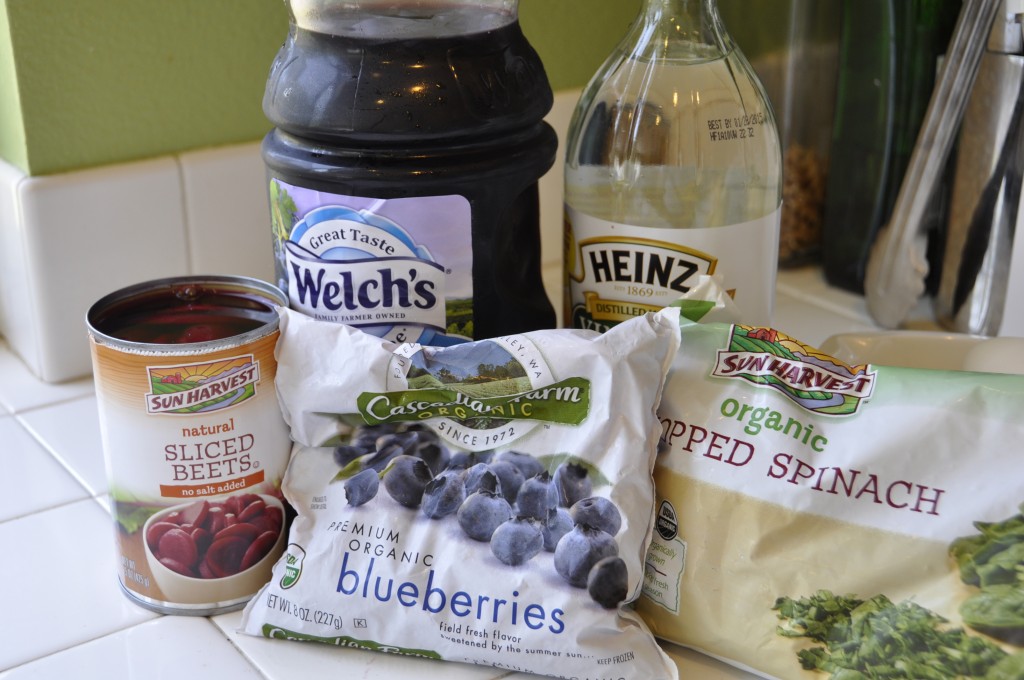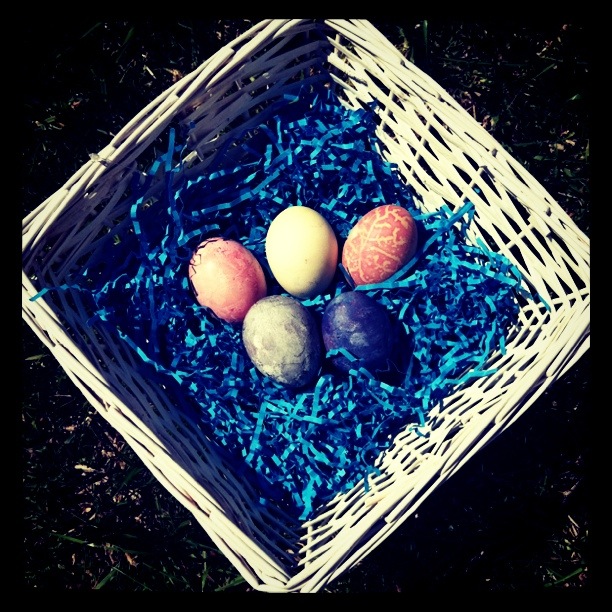I’ve been dyeing eggs for over 30 years without giving the age-old tradition a thought. As I deepen my shade of green living, I am rethinking this tradition because I have a difficult time wasting perfectly edible eggs. Traditional egg dying kits contain dyes which may be linked to hyperactivity in children, and therefore render a dozen or more boiled eggs inedible. Perhaps my mom’s tradition of poking two holes at the top and bottom of each egg to syphon the raw egg yolk and white out wasn’t that far fetched.

Since I don’t have the time or patience to syphon eggs for coloring (sorry mom), I decided to try dyeing eggs naturally this year. You’d be surprised at how effective some of the foods in your kitchen can be at dyeing eggs, countertops, hands, and more. Here is what we initially started out with:
Canned Beets
Blueberries
Frozen Spinach
Spices
This is just a partial list of potential ingredients you could use to dye eggs. Part of the fun was experimenting with what we had in our kitchen. Take inventory of your fridge and cupboard for potential foods and spices you could use to color eggs. Teas, fruit and vegetable skins, canned fruits, and spices can all be used to color eggs naturally.
After we gathered our ingredients, I boiled the eggs the Martha Stewart way (which was only semi-successful). While the eggs cooled, I started boiling each ingredient with some water and then reduced the heat to allow it to simmer. The longer you allow the ingredients to simmer, the deeper the color will be. Once the mixture has cooled a bit, strain it and add a couple of teaspoons of vinegar. Place your egg in the mixture and allow to sit until your desired shade is achieved. If you want to add text or designs, you can do so with a white/clear Crayon. You can also add stickers and other adornments to the eggs. I should mention that you can boil eggs in the colors if you’d like to save a step (and some time) but you’ll want to be sure not to overcook them. We opted to dye the eggs after they had boiled and cooled. Once your eggs are perfected, be sure to refrigerate them so you can eat them or use them for a dish.

Dyeing eggs with the above ingredients will likely produce varied results. I noticed in the same batch some eggs came out darker than others or speckled (which actually looked artistic). I also noticed that some of the colors rubbed off onto my hands when I handled them so be sure to dry them completely before handling. It’s important to remember that the eggs won’t be as dark as you expect them to be. But knowing that my family can actually eat the eggs we’ve dyed is more important than the shade of blue we achieved.
Have you ever dyed eggs with foods? I’d love to hear your tips and experiences.
Disclosure: I participate in the Walmart Moms program and am compensated for my time and honest opinions.
- Discover Luxury at Sonesta Irvine: Your Ideal Staycation - August 8, 2024
- CHOC Walk Returns to the Disneyland Resort – Special Events and Ways to Support - June 28, 2023
- Beastly Ball Returns to the Los Angeles Zoo - May 8, 2023

This looks fun and will be a first for our family! I think my son will have more fun dyeing the eggs this way 🙂